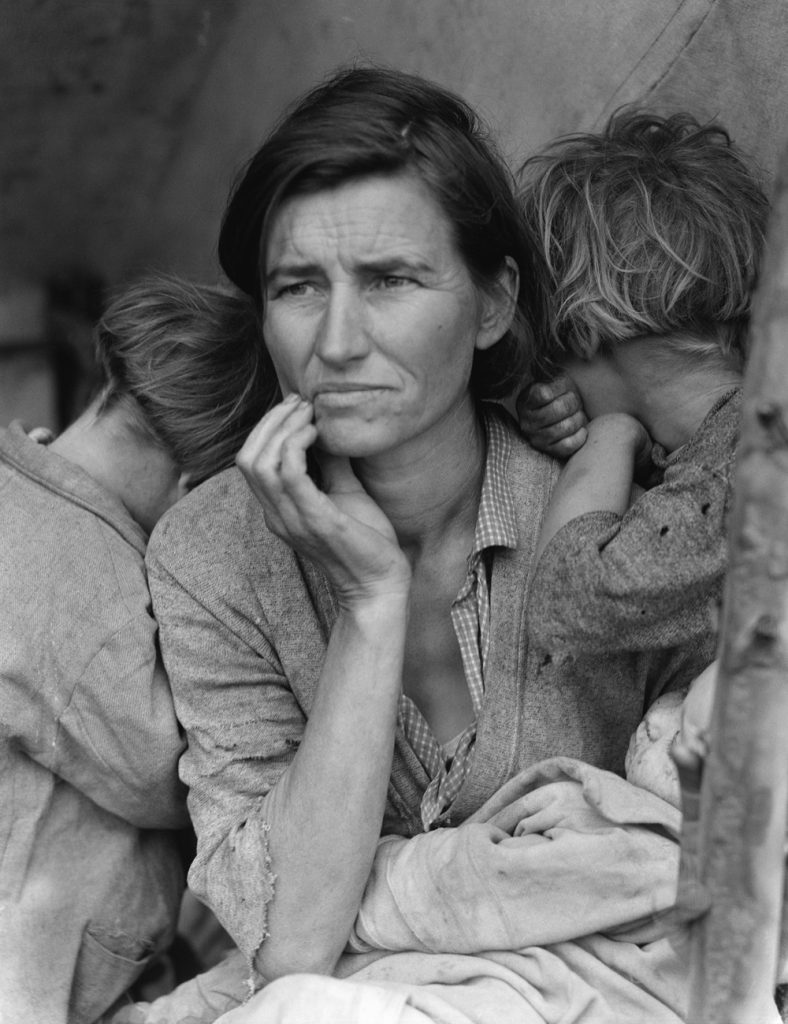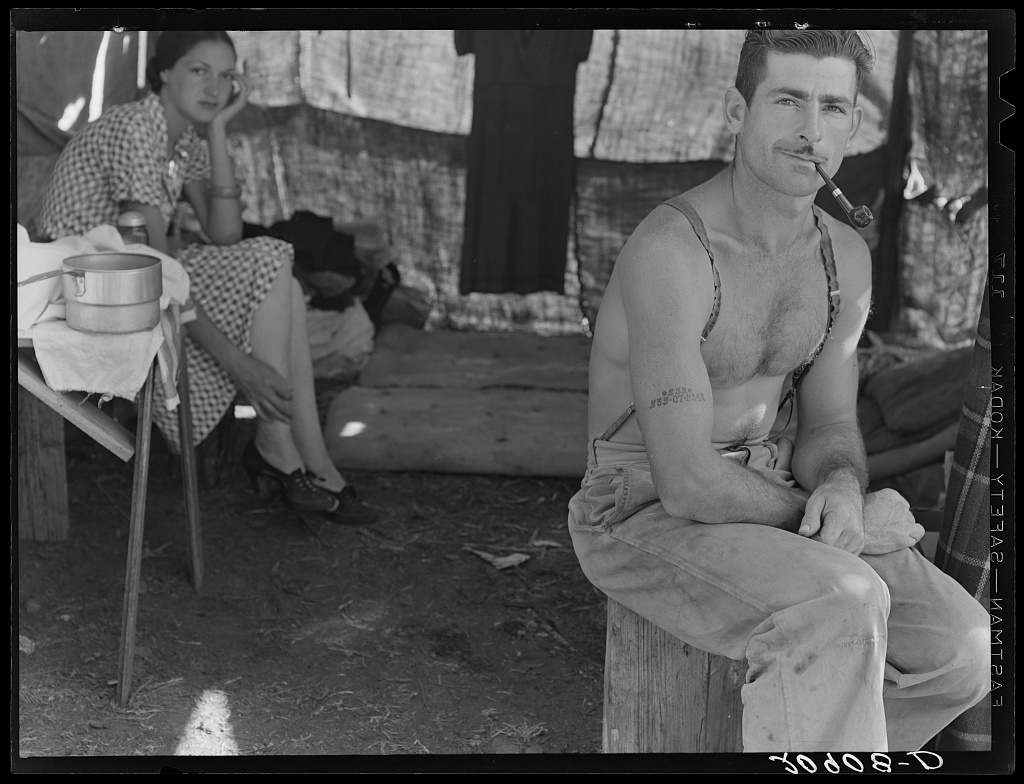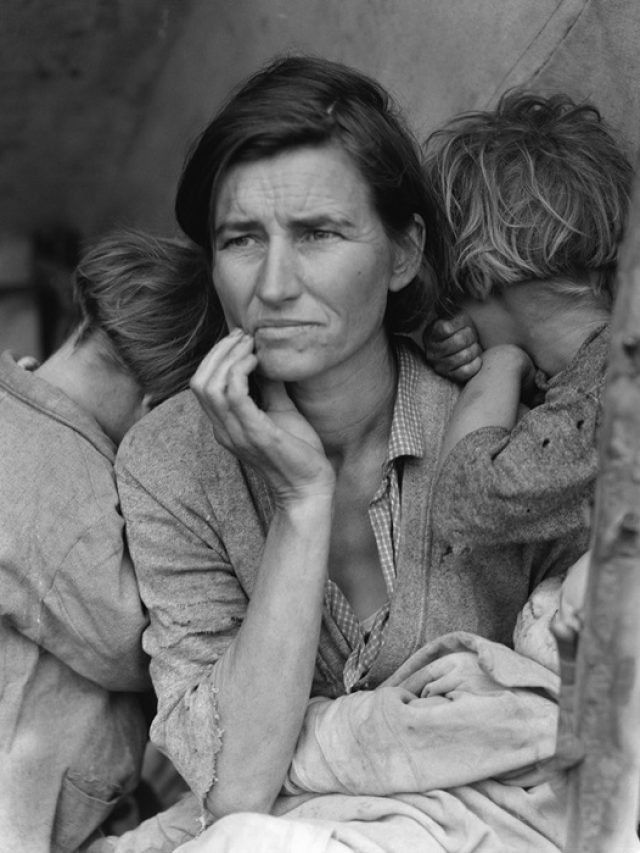Dorothea Lange (1895–1965) was an influential American documentary photographer and photojournalist best known for her work during the Great Depression. Born in Hoboken, New Jersey, on May 26, 1895, she eventually relocated to San Francisco, where she started her photography career.
The most famous and iconic image by Lange is “Migrant Mother,” which was captured in 1936 amid the Great Depression. The picture, which shows Florence Owens Thompson, a mother of seven kids, came to represent the hardships migrant labourers and their families went through during that trying period. Lange’s images frequently depicted the human effects of social injustice, economic suffering, and displacement.
Lange was employed by the government’s Farm Security Administration (FSA) in the 1930s, which sought to combat rural poverty and record the impacts of the Great Depression. Her work for the FSA and that of her contemporaries, Walker Evans, were essential in capturing the brutal reality of living in America then.
Dorothea Lange worked for a long time after the Great Depression. She also completed numerous jobs for publications, including Fortune and Life, and documented the incarceration of Japanese Americans during World War II. Her images are characterised by empathy, humanity, and a sharp eye for capturing poignant, emotionally charged moments. Lange’s work still influences social justice movements and documentary photography. Her ability to portray the human tales underlying critical historical events is widely recognised in her work, making her one of the most prominent people in American photography history.
Documenting Social Issues

Through her work, Lange captured the societal problems of her day, especially during the Great Depression. Her shots effectively conveyed the effects of poverty, displacement, and bad economic times on people. Through her lens, she told the stories of familiar people facing tremendous challenges. This method turned documentary photography into art that could arouse solid feelings and provide information.
“Migrant Mother,” Lange’s most well-known shot, has come to symbolise the hardships of the Great Depression. The image’s emotional impact and capacity to portray the predicament of migrant labourers contributed to a greater understanding of the human cost of financial hardship. “Migrant Mother” is more than just a picture; it’s a potent representation of resiliency and the human spirit that enhances our understanding of that historical period.
Walker Evans and other Lange contemporaries significantly contributed to the advancement of social documentary photography. Lange set the path for later generations of photographers and artists who aimed to address social issues through their work by using photography as a vehicle for social change. The development of visual storytelling was significantly influenced by Lange’s use of visuals to tell stories. Her ability to record unguarded and intensely felt moments contributed to redefining the function of photography in narrating intricate stories. Her work affected not just photographers but also journalists, filmmakers, and artists of other media.

In addition to producing moving pictures, Lange’s work also involved advocacy. Through her images, she aimed to advocate for good change and draw attention to societal injustices. Her importance in American art was further cemented by her dedication to using art as a vehicle for social and political commentary. Dorothea Lange’s significance in American art is due to her capacity to remark on society through photography, her iconic photos that became symbols of their era, and her impact on the growth of documentary photography as a potent artistic medium. Her work informs discussions about the relationship between art, society, and the human experience.
Iconic Representation of the Great Depression
The image captures the time’s suffering, poverty, and psychological cost, resulting in a potent emblem beyond its immediate setting. Because Lange’s image centres on Florence Owens Thompson and her kids, it humanises the economic situation. In addition to documenting poverty, the picture beautifully captures a mother’s fortitude and resiliency in the face of hardship. A large audience could relate to and feel the effects of the Depression because of this personal perspective.
A worldwide representation of the resilience of moms and families in trying times is the “Migrant Mother.” “Migrant Mother,” one of Lange’s most well-known pieces, was crucial in establishing documentary photography as an art form. The image showed strong, emotionally intense photos that might also have aesthetic value and social relevance. This raised questions about conventional ideas of what art was and increased the potential for visual narrative.
The broad publication and distribution of “Migrant Mother” raised awareness of the more essential problems of poverty and inequality as well as the living situations of migrant workers. The image helped the Farm Security Administration in its attempts to solve the social and economic issues of the day by influencing lawmakers and forming public opinion. As a cultural icon, “Migrant Mother” has persisted and is regularly cited and replicated in various media. Its ongoing influence on the communal memory of the Great Depression is attested to by its continued presence in art history schools, museums, and conversations about the relationship between art and social issues.
Migrant Mother and Great Depression
The image portrays the extreme misery and adversity that people went through during the Great Depression. The portrait represents Florence Owens Thompson as a mother, and her tense and anxious expression highlights the many difficulties families face in this economic uncertainty. Thompson and her kids are portrayed as impoverished despite the fertile countryside all around her, emphasising the contrast between the wealth of resources and the inability of many people to access them during the Great Depression.

The image depicts a migrant worker and her family, highlighting those frequently compelled to leave their homes for employment and a better life. The heart of the challenges encountered by migrant workers is captured in Lange’s image, which depicts their exceptionally terrible circumstances. “Migrant Mother” captures the essence of the Great Depression—the survival battle. The image of Thompson’s children gathered around her highlights the issue of a distressed family and the difficulties of supporting and shielding loved ones in the face of financial instability.
The picture has a certain amount of emotional fortitude despite the horrible situation. Thompson conveys a mother’s will to endure and defend her family with her resolute stare and how she cradles her kids. This tenacity is consistent with the more significant idea of the American spirit persevering in the face of hardship. As a documentary photographer for the Farm Security Administration, Lange sought to capture and draw attention to social injustice.
“Migrant Mother” is a strong illustration of this goal, illuminating the hardships of a particular family while signifying the more significant structural problems that characterised the Great Depression.





